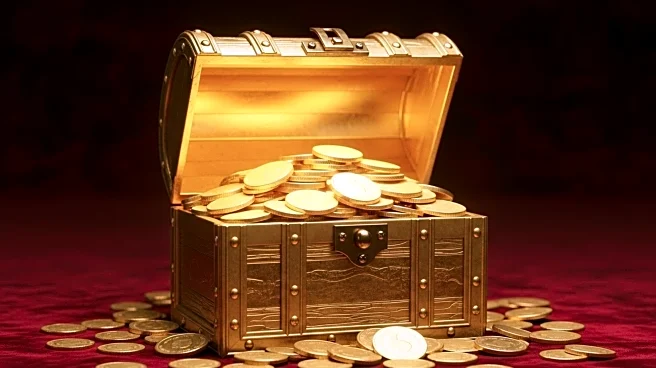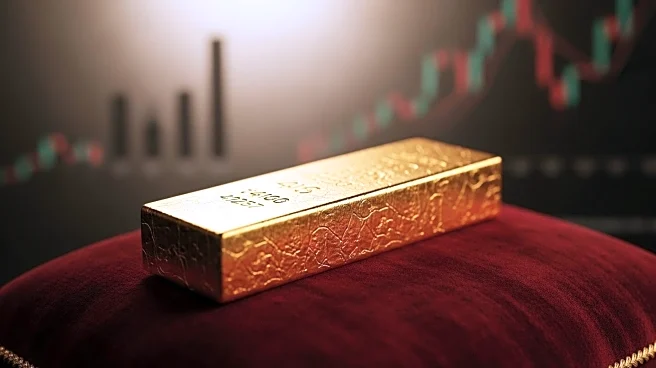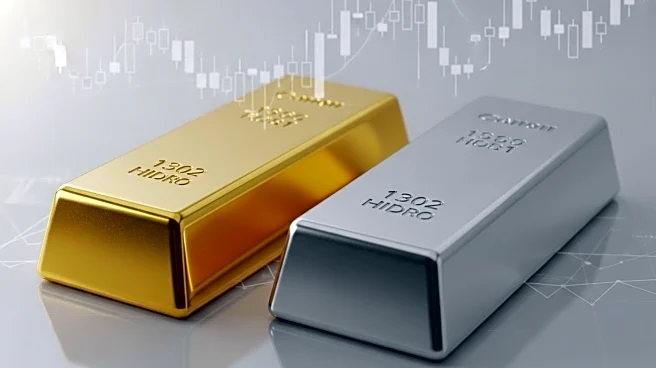What's Happening?
Gold prices have surged past $4,000 an ounce, marking a significant increase and setting the stage for the metal's best year since 1979. This rise comes as investors seek safe-haven assets amid economic uncertainty, including a U.S. government shutdown that has disrupted major economic reports. The rally in gold is occurring alongside a booming stock market, driven by investor interest in artificial intelligence and big tech companies. The U.S. dollar's weakness has further fueled the demand for gold, as central banks and investors look to diversify away from the greenback.
Why It's Important?
The surge in gold prices reflects broader economic concerns, including inflation and geopolitical tensions. As a traditional safe-haven asset, gold's rise indicates investor unease about the stability of the global economy and the U.S. dollar's status as a reserve currency. The increased demand for gold by central banks and investors suggests a shift in confidence away from fiat currencies. This trend could have long-term implications for global financial markets and monetary policy, as countries and investors seek to hedge against economic volatility and currency devaluation.
What's Next?
Goldman Sachs predicts that gold prices could reach $4,900 by the end of next year, driven by strong buying from central banks and retail investors. The potential for further rate cuts by the Federal Reserve may also support higher gold prices. Investors will continue to monitor economic indicators and geopolitical developments that could impact gold demand. The ongoing U.S. government shutdown and its effects on economic data will be closely watched, as will any shifts in monetary policy by major central banks.










